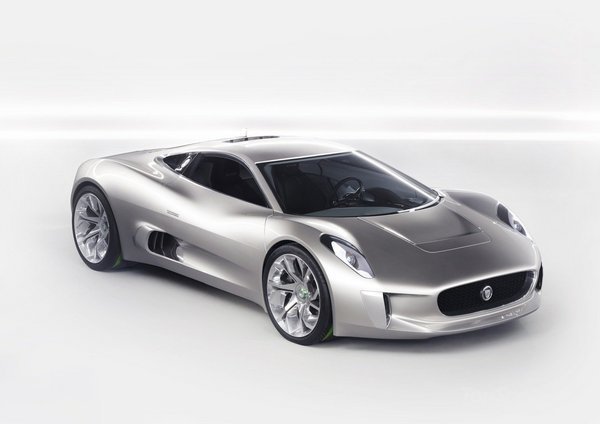In Part One of this retrospective we left Rover in 1967 at the dawn of the British Leyland era. To get there I had to do an awful lot of ‘history’ and not a lot of ‘opinion’ and if you found that a bit tedious then I can only apologise. Since you’ve stuck around into Part Two I can also say “congratulations!” because this bit is going to be a bit less Open University-style lecturing and much more “What I reckon is…”
There’s some scene setting left to do though. When Rover became part of the BL empire it was very, very close to being one of the best makers of modern quality cars in the world. If Triumph was the British BMW then Rover was very close to being the British Mercedes. The car that would cement this reputation was the proposed replacement for the P5, dubbed the P8.
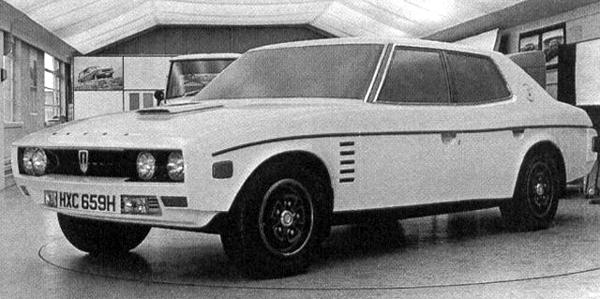 This was a big, big car. It looked like an ‘Eighties BMW crossed with a Plymouth GTX. Not beautiful certainly imposing. Under the skin it was planned to feature the hydropneumatic suspension trialled so successfully on at least some versions and a 4.4-litre version of the ex-Buick V8. Basically the P8 was to do to large saloons what the P6 did to medium ones- make almost every other product on the market look instantly old fashioned and doddery.
This was a big, big car. It looked like an ‘Eighties BMW crossed with a Plymouth GTX. Not beautiful certainly imposing. Under the skin it was planned to feature the hydropneumatic suspension trialled so successfully on at least some versions and a 4.4-litre version of the ex-Buick V8. Basically the P8 was to do to large saloons what the P6 did to medium ones- make almost every other product on the market look instantly old fashioned and doddery.
The P8’s development was quite drawn out and conflicted quite badly with the parallel P6BS/P9 supercar project but by the time Leyland entered the scene Rover had both projects very well on the way to production. In fact Rover had just dusted off the cheque book and placed an order with Pressed Steel Fisher to manufacture the body presses for the P8- in otherwise it had been greenlit for production.
Into this scene of optimism, innovation and progress came British Leyland. By now BL incorporated Rover, Jaguar and Triumph, all manufacturers fighting it out in the sports saloon market. This isn’t the place to go into the rumours and theories about exactly how much back-stabbing and cat fighting went on between these three companies but the end result is that the P8 was canned, at great expense, at the last minute. Triumph lost any future it had in big saloons and was instead ordered to collaborate with Rover on a joint upper-middle market saloon of an entirely fresh design. Jaguar, as was its wont, sailed serenely on as if nothing had happened.
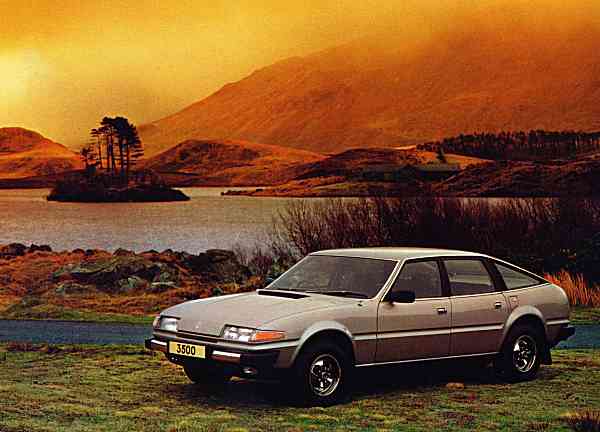 The result of this plan was the Rover SD1 (or plain ol’ Rover 3500 as it was known at launch). Although theoretically a project of the ‘Specialist Division’ (meaning Rover and Triumph) it was essentially a Rover product, being designed and styled by The Master, David Bache, and engineered by Spen King, both long-time Rover Co. members. The SD1 is a hard car to criticise as a design. It caused a sensation when it came out in 1976 (a good six or seven years, incidentally, after Rover felt the P8 should have come along) because it looked like nothing else. Except, of course, a Ferrari Daytona. It was a four-door coupe/luxury saloon that looked like a supercar. Not only did it cost a fraction of what a real supercar cost but it also cost less, went faster and used less fuel than all its rivals. It was breathtakingly modern outside and in. The interior is a bit of a Marmite factor. I know some people dislike the strange combination of ‘functional luxury’, like the way the instrument cluster is just a box screwed on top of the main dash rail, and that it entirely lacks any natural materials at all, but I really like it. The original SD1 even featured a sort-Quartic steering wheel.
The result of this plan was the Rover SD1 (or plain ol’ Rover 3500 as it was known at launch). Although theoretically a project of the ‘Specialist Division’ (meaning Rover and Triumph) it was essentially a Rover product, being designed and styled by The Master, David Bache, and engineered by Spen King, both long-time Rover Co. members. The SD1 is a hard car to criticise as a design. It caused a sensation when it came out in 1976 (a good six or seven years, incidentally, after Rover felt the P8 should have come along) because it looked like nothing else. Except, of course, a Ferrari Daytona. It was a four-door coupe/luxury saloon that looked like a supercar. Not only did it cost a fraction of what a real supercar cost but it also cost less, went faster and used less fuel than all its rivals. It was breathtakingly modern outside and in. The interior is a bit of a Marmite factor. I know some people dislike the strange combination of ‘functional luxury’, like the way the instrument cluster is just a box screwed on top of the main dash rail, and that it entirely lacks any natural materials at all, but I really like it. The original SD1 even featured a sort-Quartic steering wheel.
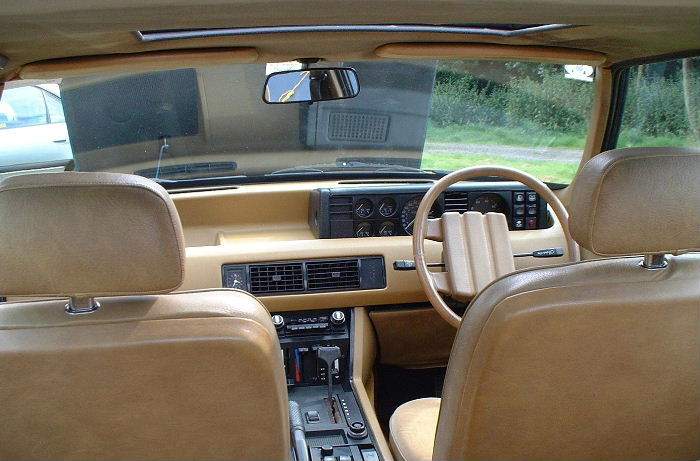 The problem with the SD1 is under the skin. Whilst the P6 and the P8 were entirely modern, almost futuristic, in their mechanicals, the SD1 was a step backwards. It had a live axle and drum brakes at the back and conventional Macpherson struts at the front. There’s nothing wrong with that and the SD1 rode and handled very well but it was a sad departure from Rover’s ethos of engineering quality and innovation. Apparently Rover had planned to offer air suspension on the back as an option on the top-of-the-range models, but that never happened. The engine was just a tweaked version of the 3.5-litre V8 used previously which, again is nothing bad but lacked, I don’t know, ‘ambition’, after the turbines and 4.4s of the previous decade.
The problem with the SD1 is under the skin. Whilst the P6 and the P8 were entirely modern, almost futuristic, in their mechanicals, the SD1 was a step backwards. It had a live axle and drum brakes at the back and conventional Macpherson struts at the front. There’s nothing wrong with that and the SD1 rode and handled very well but it was a sad departure from Rover’s ethos of engineering quality and innovation. Apparently Rover had planned to offer air suspension on the back as an option on the top-of-the-range models, but that never happened. The engine was just a tweaked version of the 3.5-litre V8 used previously which, again is nothing bad but lacked, I don’t know, ‘ambition’, after the turbines and 4.4s of the previous decade.
None the less the SD1 in 3500, 2600 and 2300 forms was very much a proper Rover. It looked strikingly modern, was comfortable and refined, quick but not exactly ‘sporting’. A weapon rather than a precise driving tool.
I’m now going to gloss over the next decade or so because thanks to BL’s chronic shortage of money and its focus on other, more troubled, parts of its range the SD1 was left largely to itself with very little in the way of development. An indifferent facelift did little to affect the car’s looks for good or bad, but took away a bit of the original interior’s WOW factor. The Rover 2000 and the 2400D kept up with changing tax laws and rising fuel prices respectively. The introduction of the Vitesse (sporting) and Vanden Plas (luxury) range-toppers were certainly A Good Thing, although both were names borrowed from other companies from with the BL system.
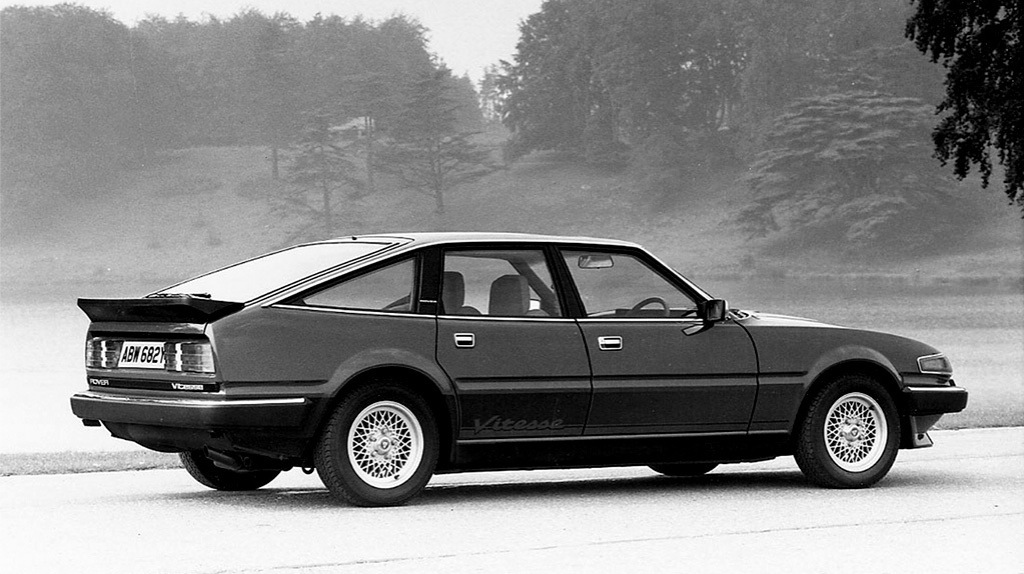 We pick up the story again in 1984. By this stage British Leyland had teamed up with Honda, the first result of that ‘partnership’ being the Triumph Acclaim- essentially a Honda Ballade (or ‘Civic With A Boot’) with a Triumph badge and the seats from a Ford Cortina. As you’d expect from a Japanese car it was dull but soundly designed. Crucially it was built at Cowley to a very high standard and provided much needed proof that a British factory with British workers could still make cars quite well.
We pick up the story again in 1984. By this stage British Leyland had teamed up with Honda, the first result of that ‘partnership’ being the Triumph Acclaim- essentially a Honda Ballade (or ‘Civic With A Boot’) with a Triumph badge and the seats from a Ford Cortina. As you’d expect from a Japanese car it was dull but soundly designed. Crucially it was built at Cowley to a very high standard and provided much needed proof that a British factory with British workers could still make cars quite well.
You could almost say that it met with…some acclaim.
Then the time came to replace the Acclaim and this is where we get to the meat of my ‘most screwed-over brand’ theory with regards to Rover. The next generation of Ballade was a much more joint effort between BL and Honda, codenamed SD3. Unfortunately the resulting car was launched as the Rover 200. After all the groundwork done by the Acclaim in renewing a bit of the public’s faith in Triumph the brand was axed and the Rover marque, which hadn’t been used on a small car since the ‘Twenties, was used instead.
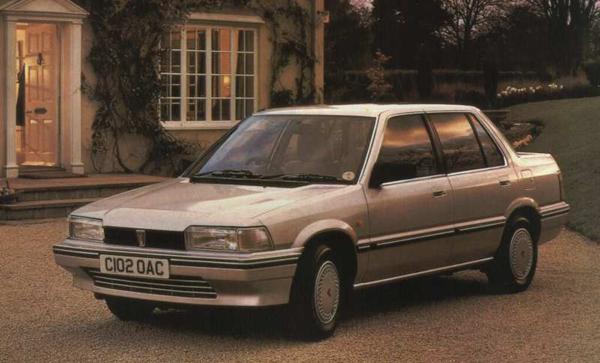 This was, in my opinion, the tipping point. In the ‘Eighties BL was, quite rightly, having a long-overdue clearout of all its brands, many of which were either entirely superfluous because they had long-ago been reduced to mere badge engineering exercises, or had been damaged beyond repair by a string of ill-judged and badly-made cars. Morris finally and, as I’ve said before, not entirely justifiably, bowed out in favour of Austin. Triumph was partially revived with the Acclaim then axed. MG was put in temporary suspension after the MGB was finally put out of its misery before coming back as a badge on Austins, and both Rover was left alone at the top of the tree.
This was, in my opinion, the tipping point. In the ‘Eighties BL was, quite rightly, having a long-overdue clearout of all its brands, many of which were either entirely superfluous because they had long-ago been reduced to mere badge engineering exercises, or had been damaged beyond repair by a string of ill-judged and badly-made cars. Morris finally and, as I’ve said before, not entirely justifiably, bowed out in favour of Austin. Triumph was partially revived with the Acclaim then axed. MG was put in temporary suspension after the MGB was finally put out of its misery before coming back as a badge on Austins, and both Rover was left alone at the top of the tree.
After the failure of the key mass-market Austins, the Maestro and the Montego (and to ready the whole enterprise for privatisation) it was decided to make the Rover Group a specialist manufacture of premium cars rather than an all-the-bases mass producer. This led to the ditching of the Austin name (although, bizarrely, not the cars, which soldiered on into the early ‘Nineties without a brand) and a focus on the Rover marque.
It makes a sort of sense because Rover was both a premium brand and a relatively untainted one at the time. But why take a relatively exclusive brand like Rover and try to apply it to small premium saloons with a bit of sporting pretention when Triumph, which had received such a crucial shot in the arm just a few years before, had all that heritage already. The Acclaim may not have been particularly sporting but neither were the basic Heralds and Toledos of the past. The SD3 200 proved to have some genuine talent in Sprint and Vitesse form (please note the use of ex-Triumph monikers!) and the Triumph badge would be so much better suited to a small sports saloon that the Rover Longship which had, for 40 years, only graced the bonnet of big-engined wafting road barges.
The SD1s actually replacement, the 800 (which also spawned the Honda Legend) was a much better, more suitable effort. It lacked the SD1s impact or innovation and with front wheel drive and no V8 engine it lacked the visual impact and imposing character of the P5, the P6 and the SD1. It was much more of a P4- refined but sporting gentleman’s cruiser. It also saw a return to the wood-and-cream-leather ambience which hinted at a worryingly un-Rover like turn towards ‘traditional values’ in a market dominated by slick, modern and distinctly woodless German cars. The 1992 facelift greatly improved the looks by bulking out what had been a rather unimposing car but the distinctly old-school interior remained.
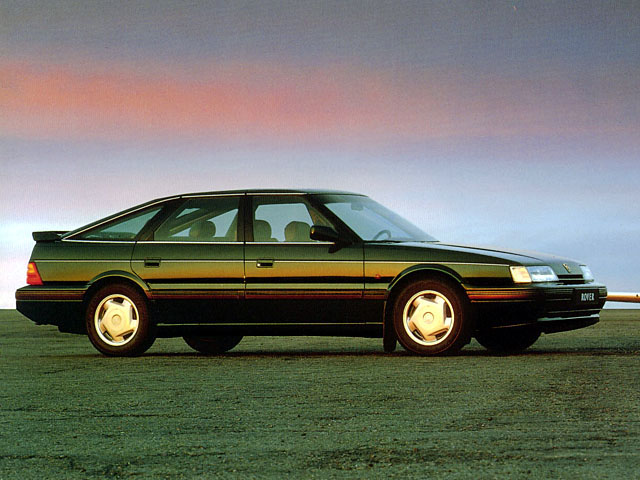 The next Rover off the blocks was the R8, the second-generation 200 (closely followed by its 400 saloon sibling). I will state here and now that I believe the R8 to be one the best cars ever made by the British domestic motor industry. In 1989 there were few equivalent small saloons/hatches that could match its looks, its specification, its quality or its mechanical sophistication. However it’s still a car that’s crying out to be a Triumph rather than a Rover. At the same time that the 800’s quality problems were chipping away at Rover’s residual good image whilst the name was being slapped on ever smaller and cheaper cars which, regardless of how good they were, were just helping to drag it away from its lofty perch near the top of the automotive tree.
The next Rover off the blocks was the R8, the second-generation 200 (closely followed by its 400 saloon sibling). I will state here and now that I believe the R8 to be one the best cars ever made by the British domestic motor industry. In 1989 there were few equivalent small saloons/hatches that could match its looks, its specification, its quality or its mechanical sophistication. However it’s still a car that’s crying out to be a Triumph rather than a Rover. At the same time that the 800’s quality problems were chipping away at Rover’s residual good image whilst the name was being slapped on ever smaller and cheaper cars which, regardless of how good they were, were just helping to drag it away from its lofty perch near the top of the automotive tree.
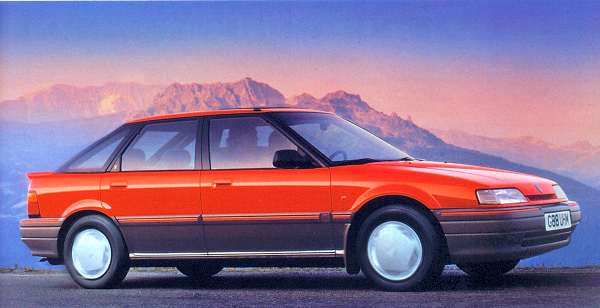 The ultimate expression of this has to be the Metro. Now, I like the Metro a lot (I do own one, after all) but I have a specific and quite intense dislike of the Rover Metro because of what it represents. I can be satirical and say the Rover Saw The Future because now everyone from Audi to Aston Martin makes luxury superminis but it was just commercial suicide to badge a decade-old mini-hatch with a rather shoddy facelift and an iffy reputation for quality as a Rover. I know that the K-Series engined Metro/Rover 100 with proper Hydragas suspension was technically a very clever car but it could never comfortably wear the badge. A Metro could never, ever, be ‘the middle class Rolls-Royce’.
The ultimate expression of this has to be the Metro. Now, I like the Metro a lot (I do own one, after all) but I have a specific and quite intense dislike of the Rover Metro because of what it represents. I can be satirical and say the Rover Saw The Future because now everyone from Audi to Aston Martin makes luxury superminis but it was just commercial suicide to badge a decade-old mini-hatch with a rather shoddy facelift and an iffy reputation for quality as a Rover. I know that the K-Series engined Metro/Rover 100 with proper Hydragas suspension was technically a very clever car but it could never comfortably wear the badge. A Metro could never, ever, be ‘the middle class Rolls-Royce’.
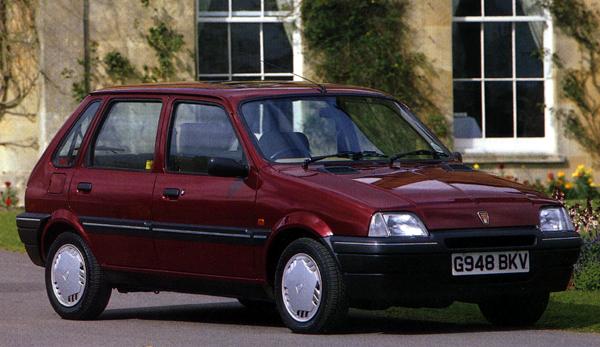 I’m not going to do a blow-by-blow account of all of the Rover Group’s activities in the ‘Nineties because for all of them (R3 200, HHR 400, 600) my attitude is “good car, but not a Rover”. All of those cars could have rejuvenated the Triumph badge very well whilst retaining a ‘premium’ air that Austin could not. Triumph was never on a par with the Fords and Vauxhalls of this world but, thanks to its long history of small saloons, was never quite as exclusive as Rover.
I’m not going to do a blow-by-blow account of all of the Rover Group’s activities in the ‘Nineties because for all of them (R3 200, HHR 400, 600) my attitude is “good car, but not a Rover”. All of those cars could have rejuvenated the Triumph badge very well whilst retaining a ‘premium’ air that Austin could not. Triumph was never on a par with the Fords and Vauxhalls of this world but, thanks to its long history of small saloons, was never quite as exclusive as Rover.
I have almost fully stated my case, but I will draw it to a close with the most egregious example. The Rover 75.
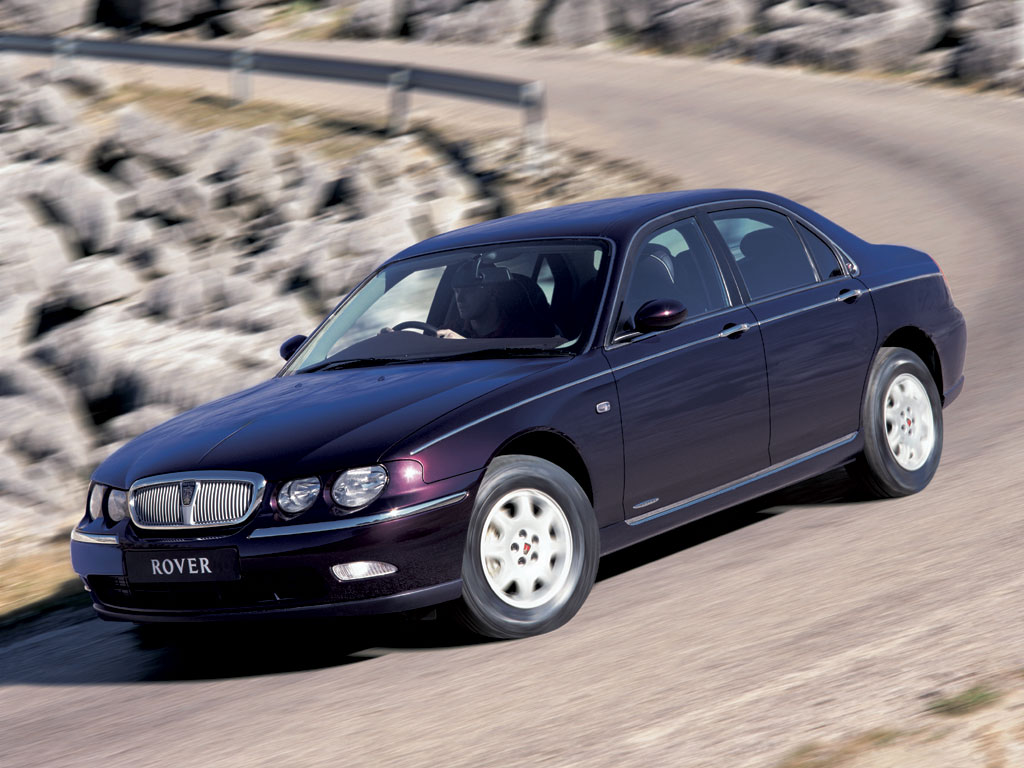 I feel very conflicted about this car because I genuinely like it but hate almost everything it represents. When I compare the 75 with its quad lamps around a chrome grille, brightwork trim, beige dials and rolling plains of plastic-coated wood with the up-to-the-minute styling of the P6, the P8 and the SD1 and I do slightly despair. It’s everything that people think Rover is- conservative bordering on old fashioned, unadventurous- and almost nothing that Rover actually was.
I feel very conflicted about this car because I genuinely like it but hate almost everything it represents. When I compare the 75 with its quad lamps around a chrome grille, brightwork trim, beige dials and rolling plains of plastic-coated wood with the up-to-the-minute styling of the P6, the P8 and the SD1 and I do slightly despair. It’s everything that people think Rover is- conservative bordering on old fashioned, unadventurous- and almost nothing that Rover actually was.
My disagreement with the styling is made worse by what it’s like to drive because it drives incredibly well with an excellent blend of comfort and handling. It also feels very ‘heavy’ but in a very well balanced way. Solid, that’s the overpowering aspect. In other words under the ridiculous retro bodywork is what is a very good car and one that deserves far more respect that it gets precisely because of the entirely unnecessary ‘old fart’ image.
It’s the yawning chasm between what Rover could have been- what it came so close to becoming in the late ‘Sixties- and what it ended up as in 2005 that’s so infuriating.
You can, in 2012, still walk into a dealership and buy a large, luxurious car with definite performance abilities but no real ‘sportiness’. It’s built in Britain with oodles of class and a big dollop of tradition but isn’t in the least bit retro or stodgy. It’s a world leader in its class and demand is consistently high. It has a V8 engine in the front and clever active and adjustable suspension underneath. It even has a badge saying ‘Rover’ on the front:
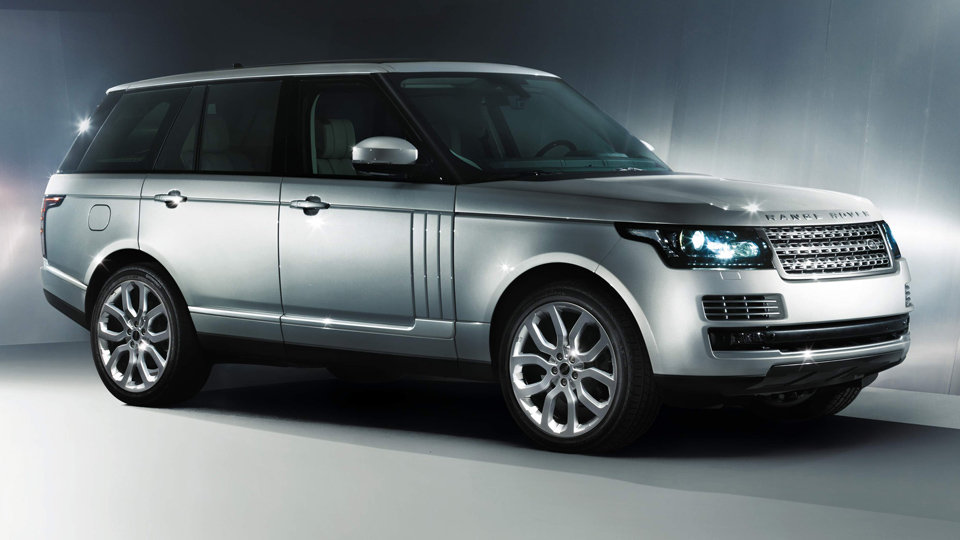 The Range Rover and its cousin the Range Rover Sport are where the P5 and the P6 live on in the 21st century and it’s always good to remember where the second word in the marque name comes from. What’s more the same company is building a highly innovative supercar with gas turbines in the back which looks set to make the established Italian manufacturers look a bit foolish. The spirit isn’t entirely dead.
The Range Rover and its cousin the Range Rover Sport are where the P5 and the P6 live on in the 21st century and it’s always good to remember where the second word in the marque name comes from. What’s more the same company is building a highly innovative supercar with gas turbines in the back which looks set to make the established Italian manufacturers look a bit foolish. The spirit isn’t entirely dead.
